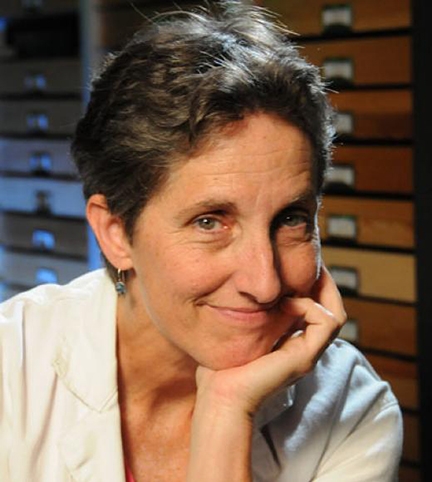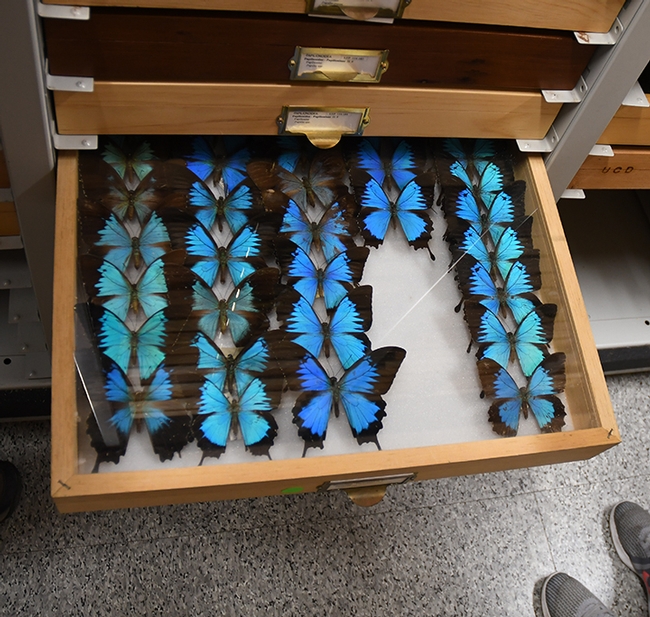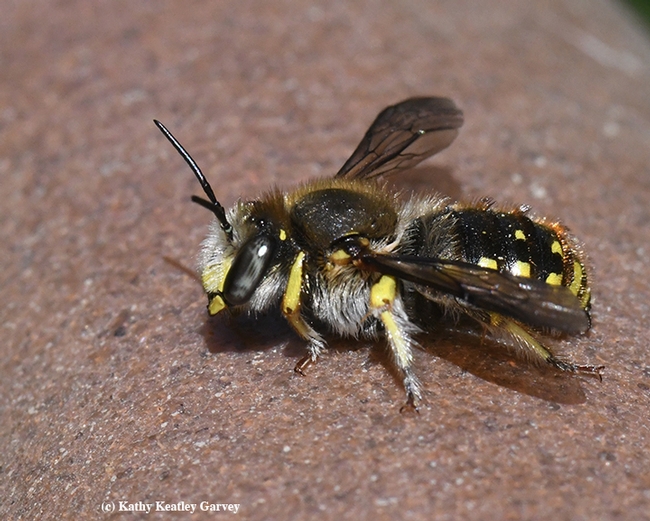

As you shelter in and look for something intriguing to do, would you to learn more about entomology, the science of insects?
The Bohart Museum of Entomology at UC Davis, home of nearly eight million insect specimens, offers a wealth of information on insects in its free fact sheets that you're welcome to peruse and download. Topics include beetles, wasps/bees, mites/ticks, ants, flies, butterflies/moths, true bugs, and non-insects (think spiders, lawn shrimps, scorpions, springtails.) The fact sheets are the work of Bohart director Lynn Kimsey, professor of entomology, UC Davis Department of Entomology and Nematology.
If you want a bug identified, you can also shoot Professor Kimsey an email at lskimsey@ucdavis.edu.
As for how to create an insect collection, the Department of Entomology and Nematology provides a great resource. Back in 2010, distinguished professor James R. Carey led a group of students in producing short, clear, concise videos on just that: how to create an insect collection. (Many high school and college teachers assign their students to collect insects, as do some youth programs that engage in entomology.)
The entire series, totaling 11 clips ranging in length from 32 seconds to 77 seconds, can be viewed in just less than 10 minutes. "So in less than 10 minutes, someone can learn how to make an insect collection,” Carey says. The clips are tightly scripted, with an emphasis on brevity, simplicity and low cost.
The project won an award from the Entomological Society of America (ESA). Carey went on to win the ESA's 2015 Distinguished Teaching Award; the "How to Make an Insect Collection" project was just one of the many factors considered.
So, how do you make an insect collection? Easy!
Here are the videos:
Part 1:
Hand Collecting (32 seconds)
Part 2:
Using an Aspirator (34 seconds)
Part 3:
Ground Collecting (54 seconds)
Part 4:
Aquatic Collecting (58 seconds)
Part 5:
Using Nets (58 seconds)
Part 6:
Killing (51 seconds)
Part 7:
Pinning (43 seconds)
Part 8:
Point Mounting (50 seconds)
Part 9:
Labeling Specimens (48 seconds)
Part 10:
Spreading (77 seconds)
Part 11:
Storage and Display (32 seconds)
Attached Images:

Swallowtail butterflies at the Bohart Museum of Entomology. Entomologist Jeff Smith, curator of the Lepidoptera section, says these are the Ulysses swallowtail – Papilio ulysses – that were collected in New Guinea, mostly by senior museum scientist Steve Heydon. "They are also found in Queensland, Australia, and some islands of Indonesia. It is one of those iconic butterflies that is often pictured in ads and other media because of its spectacular color." (Photo by Kathy Keatley Garvey)

The European wool carder bee is the subject of one of the Bohart Museum online fact sheets, written by director Lynn Kimsey. (Photo by Kathy Keatley Garvey)